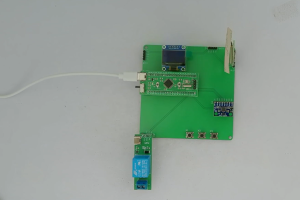设计说明书
总字数:17000+
随着汽车保有量的不断增加,交通事故的发生率也居高不下,汽车安全问题日益受到人们的关注。为了降低事故对驾乘人员的伤害,汽车碰撞检测系统应运而生。
本文设计了一种基于单片机的汽车碰撞检测系统,该系统采用负向加速度传感器监测车辆的负向加速度,当监测到的负向加速度超过预设的最大值时,系统通过继电器控制安全气囊展开,并利用无线通信模块向手机端发送短信报警,同时还可以通过按键设置负向加速度阈值,利用显示屏实时显示测量数据,并借助无线网络将监测数据传输到阿里云平台,再同步到手机端。
该系统具有实时性强、可靠性高、操作简便等特点,能够有效提高汽车在碰撞事故中的安全防护能力,为驾乘人员提供及时的预警和保护,对于提升汽车安全性能和减少事故伤亡具有重要的现实意义。
关键词: 汽车碰撞检测;单片机;负向加速度;显示屏;无线通信
Design of vehicle collision detection system based on microcontroller
Abstract: With the increasing number of cars, the incidence of traffic accidents is also high, and the safety of cars has been increasingly concerned by people. In order to reduce the harm of accidents to drivers and passengers, the car collision detection system comes into being.
This paper designs a car collision detection system based on a microcontroller. The system uses a negative acceleration sensor to monitor the vehicle’s negative acceleration. When the detected negative acceleration exceeds the preset maximum value, the system controls the airbag deployment via a relay and sends an SMS alarm to the mobile phone through a wireless communication module. Additionally, the negative acceleration threshold can be set via buttons, and the measurement data is displayed in real-time on the screen. The monitoring data is then transmitted to the Alibaba Cloud platform via a wireless network and synchronized to the mobile phone.
The system has the characteristics of strong real-time performance, high reliability and easy operation, which can effectively improve the safety protection ability of cars in collision accidents, provide timely early warning and protection for drivers and passengers, and has important practical significance for improving the safety performance of cars and reducing accident casualties.
Key words: Car collision detection; microcontroller; negative acceleration; display screen; wireless communication
目 录
摘 要
Abstract
1 引言
1.1 课题研究的背景和意义
1.2 国内外的研究现状
1.3 系统总体设计思路
1.4 课题研究的主要内容和工作
1.5 本章小结
2 系统总体设计方案
2.1 系统整体结构
2.2 方案论证和比较
2.2.1 单片机模块方案选型
2.2.2 负向加速度检测模块方案选型
2.2.3 无线通信模块方案选型
2.2.4 显示模块方案选型
2.2.5 继电器模块方案选型
2.3 本章小结
3 系统硬件电路设计
3.1 单片机最小系统电路设计
3.2 负向加速度检测模块电路设计
3.3 无线通信模块电路设计
3.4 显示模块电路设计
3.5 继电器模块电路设计
3.6 按键模块电路设计
3.7 本章小结
4 系统软件程序设计
4.1 编程软件介绍
4.2 系统主流程设计
4.3 负向加速度检测模块子程序设计
4.4 无线通信模块子程序设计
4.5 显示模块子程序设计
4.6 按键模块子程序设计
4.7 本章小结
5 实物制作与系统调试
5.1 PCB板的制作流程
5.2 调试过程
5.2.1硬件调试
5.2.2软件调试
5.2.3 实物测试
5.3 实物测试数据分析
5.4 本章小结
6 结论
致 谢
参考文献
附录1
附录2
附录3
附录4

